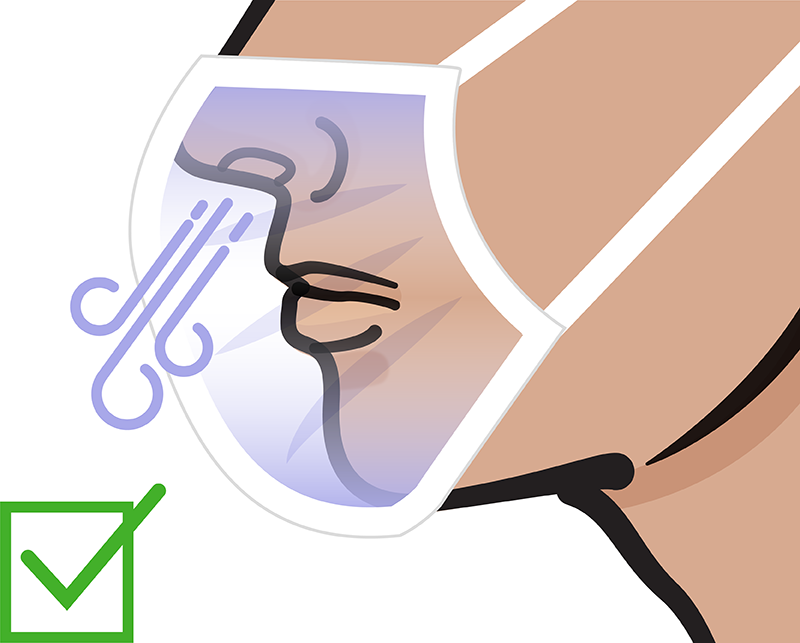The Centers for Disease Control and Prevention encourage mask wearing in order to help curb the spread of COVID-19.
Since masks mandates are relatively new, there is very little research on how wearing masks can affect oral health.

To help make wearing a mask more comfortable, you can make some slight adaptations to your oral health routine.
When wearing a mask for a length of time, you may have experienced “mask mouth” with effects like bad breath and dry mouth. This is because wearing a mask can make it feel more difficult to breathe through your nose, which leads to mouth breathing. Breathing this way causes your mouth to dry out, and dry mouth can lead to other more serious oral health issues.

Food particles sticking to your teeth, neglecting regular dentist visits and slipping in your regular home oral health routine can all contribute to bad breath.
To avoid the “mask mouth” feeling, here are a few tips to try:
- Frequently drink plenty of water.
- Limit snacking between meals.
- Chew sugarless gum if/when you can to stimulate salivary flow.
- Follow your established usual daily oral hygiene routines as recommended by your dental hygienist.
- Try to breathe primarily through your nose instead of your mouth.
If you have any specific concerns about how mask wearing is affecting your oral or overall health, be sure to speak with your dentist and physician.
This information in this post is for general educational purposes only and does not warrant or represent any information as related to health as specifically appropriate for you. It is not intended to be medical advice or replace the relationship that you have with your health care providers. You should always seek medical advice on any diagnosis or treatment from a qualified health care provider. The information is provided “as is” without any representations or warranties, express or implied.





